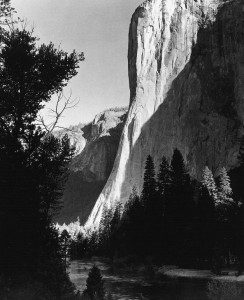Over the years, I’ve attended numerous workshops and writers’ group meetings. Often the subject of software comes up, especially when we share material for critique. After listening to other writers and experimenting with different applications, I have formed strong opinions regarding the best novel writing software.
Before exploring the options, let’s review the tasks we expect novel writing software to perform. Here are my requirements:
- Record the words I type
- Edit (make corrections and changes)
- Organize (scenes and chapters)
- Reorganize (move sections around)
- Format (eventually you will need to properly format your manuscript)
- Save in a format that can be shared
- Support tracking changes (needed to receive comments and corrections)
Using Text Editors to Write Novels
The primary task we expect our writing software to perform is to ease the process of getting the words out of your head and onto the page. For this, even the most basic text editors perform this task well. For example, if you use Windows, Notepad will work. For Apple users, TextEdit is simple and easy to use. Finally, Linux users have a plethora of choices like vi or nano. I’ve used all the above, but I don’t recommend any of these because of other considerations.
Formatting on text editors is limited or nonexistent. One of the big reasons not to use a text editor is that you will need to insert extra carriage returns to separate your paragraphs for readability. Before you can send them to a publisher, you will need to remove these.
Another concern is that most text editors won’t let you insert page breaks for new chapters and don’t support bold, underlined, or italicized characters.
But the biggest issue is size. Novels contain a large number of words, generally somewhere between 50,000 and 100,000 (War and Peace has over half a million). Their size quickly becomes a nightmare to navigate using a text editor.
So, for many reasons, text editors are out.
Using Word Processors for Novel Manuscripts
Word processors handle large documents like novels with ease. In addition, they provide navigation tools to assist in moving quickly to any point in the manuscript. So any good word processor will support the first five requirements. They all support writing, editing, organizing, and formatting.
Right or wrong, Microsoft Word’s format has become a de-facto standard. If you participate in critique groups (in person or online), the group will most likely instruct you to submit your work in MS-Word format (.docx). Plus, at some point, you will probably need the assistance of an editor. Every editor I have met insists on receiving manuscripts in MS-Word format. If you are lucky enough to work with an agent or publishing house, they will also require your manuscript in MS-Word.
When editors review your work, they will enable MS-Word’s Track Changes feature and use it to record their additions, deletions, and changes. In addition, they will also use these features to insert comments. Most fellow writers who critique your work will do the same. So to meet our needs, word processing software must also support MS-Word’s Track Changes and Comment features.
The following word processors meet these requirements:
- Microsoft Word
- LibreOffice Writer
- Apple Pages
- Google Docs
Using Creative Writing Software for Composing Novels
Writing a novel is a complicated affair. Plots need to be engineered. Settings need to be imagined and detailed. Characters need to be developed, complete with physical features, emotional scars, and backstories. And much more.
There is a plethora of software available to assist novelists. I have not used any of these, so I’m not qualified to review them. Literature and Latte cover the subject and other topics in their Links for Writers page. Reedsy provides good information on more than a dozen creative writing tools on their blog. (Of course, they rate their product best).
, marketed by Literature and Latte, gets mentioned a lot as a tool for novel-writing, with features to assist writers in nearly every aspect of composing a long story. In a workshop I attended, one participant told the group he had been recruited to teach a class on how to use Scrivener, and he was struggling to master the software well enough to teach. Several other writers indicated they owned a copy, but none actively used it. Some had given up before figuring out how to use it, while others had stopped using it because of the complexity. Finally, one of the writers recommended watching a set of tutorial videos covering how to access different features. After listening to the discussion, I concluded that it would be better to use my time writing instead of learning to use the software.Software I Use For Novel Writing
Over the years, I have experimented with a lot of different software. Currently, the devices I use for writing include:
- Desktop: iMac
- Laptop: Macbook Air
- Phone: Google Pixel
I realize that’s an odd combination. But, the reason for mentioning this is that it affects my software choices.
Currently, this is what works for me.
Google Docs for Writing
Currently, I write my novels using Google Docs. Why? There are several reasons:
- The tools are simple, with enough functionality to do the job, but without a ton of unneeded features that get in the way.
- There’s no software to install. I can use any browser.
- My work is saved in the cloud (Google Drive). So I can access it from my desktop, laptop or phone.
- I can export and import to MS-Word format.
- It’s free.
Could I do this using MS- Word and Office 365? Absolutely.
My point is that Google Docs gets the job done for me.
Google Slides for Plot Planning
I know what you’re thinking. Using presentation software for plot planning sounds crazy. I explain this in more detail in my article, Plot Planning for Novels.
In a nutshell, I develop my plot plan by summarizing each scene on a single slide. This technique lets me work at a high level. I can see the big picture. In addition, it’s easy to insert, delete and reorder scenes using the grid view.
Then, when I’m ready to write a scene, I copy the slide summary into my manuscript (and make the font color blue, so it stands out). That way, I can see my notes for the scene while I write. Then, when I finish writing the scene, I delete the blue notes.
Google Keep for Capturing Notes on the Fly
Google Keep is an Android App (similar to Notes on iPhone). So when I’m anywhere (working my day job, at dinner, or on the beach at a vacation resort) and I get an inspiration, I capture it before I get distracted by opening Google Keep on my phone and making a note.
Later, when I’m writing, I can display my Google Keep notes in a browser window while incorporating the notes into my manuscript.
Google Drive for Organizing Information
As I research locations, I take pictures and videos on my phone. When I research things on my computer, I’ll save screenshots from web pages. When I develop characters, I’ll write up detailed profiles for each character.
I create a separate folder on Google Drive for each novel. I can easily upload pictures and videos using the Google Drive app from my phone. I save my Plot Planning, Character Profiles, and everything else in one convenient place in Google Drive, where the information is easy to access no matter which device I’m using to write, including my phone. (Yes, I am guilty of writing using my phone while I sat on planes or in doctors’ offices.)
Summary
The whole purpose of novel writing software is to assist you in getting the story out of your head and onto your manuscript. That means it needs to be easy to use and available whenever you have a few minutes to write.
I’ve shared what works for me. Please tell me what works for you in the comments below.
This article mentions a book. More information is provided below.
(Full disclosure: I get a commission if you click the link and make a purchase.)
Comments
Related Posts

Six Steps to Maximize Writing Productivity
Six steps to take before launching a writing session that will prevent writer’s block and significantly improve your productivity.

Scene Planning: Visualize Scenes Like a Master
I realized if I truly desired to master the arts of writing and storytelling, I needed to invest more time and energy planning before writing. These are the eight steps I now take before writing to visualize scenes.

Join a Critique Group
My brother recommended joining a critique group. It turned out to be the best writing tip I’ve ever received, not only did I finally receive quality feedback. I found friends who shared common goals.

Book Trailers: Are They Effective?
Do book trailers actually affect book buying decisions? Help me decide by completing my poll and adding your comments.



